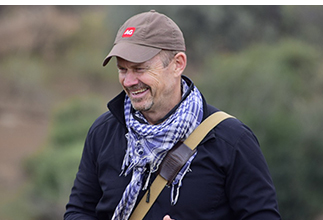
CEO NOTE: 16 April 2021
This is a copy of our weekly email newsletter. Subscribe here to receive the newsletter.

I watched this trailer for an African-themed movie and was not sure whether to laugh out loud or vomit in the back of my mouth. If you can get past the horrendous type-casting of African people and gobsmackingly misinformed portrayals of predators waiting around every corner to eat you alive – then you are a better person than I. Apparently, there are rhinos in Amboseli (which attack and flip vehicles), and the hyenas there whoop like gibbons when hunting humans. Breathe deeply Simon, move on …
Back to reality, and after a really good wet summer here in the Greater Kruger region, the seasons have turned, and our autumnal grass and woodlands are rapidly turning golden brown as we prepare for a long dry winter. We are heading into the best wildlife-viewing time, and intrepid travellers are taking advantage of Covid-impacted low prices and few tourists. Need I say more?
Keep the passion

Simon Espley – CEO, Africa Geographic
From our Editor-in-Chief
 This week is much about the elephants – one a good news, if rather technical, story and the other, another blight on humanity’s appalling environmental report card. In the first one below, veteran Namibian conservationist Gail Thomson describes exactly how the Namibian government arrived at their population figure of 24 000 elephants. Despite what naysayers might argue, it would seem that Namibia’s elephant population is thriving and increasing. Long may that last.
This week is much about the elephants – one a good news, if rather technical, story and the other, another blight on humanity’s appalling environmental report card. In the first one below, veteran Namibian conservationist Gail Thomson describes exactly how the Namibian government arrived at their population figure of 24 000 elephants. Despite what naysayers might argue, it would seem that Namibia’s elephant population is thriving and increasing. Long may that last.
Our second story below leaves me bemused. Quite how it has taken the IUCN so long to recognise the species status of the forest elephant despite science having known about it for almost 20 years, is beyond me. What on earth have they been doing? With the speed of frozen treacle oozing uphill, the politicians, lawyers and scientists have finally made it official and the news is not good – the forest elephant is critically endangered.
After all that, our third story below should be much more fun and encouraging. Mix yourself a pina colada (yes, I know you’re at work but that might make it taste even better). I’ve always had a fascination with remote ocean islands. This story of Mauritian conservation – pristine beaches, coral reefs, tropical fishes, lush forests, endemic animals and cascading waterfalls – had me yearning to feel the sand between my toes, hearing the drum of the ocean and the primordial sound of the island jungle.
Finally, our Photographer of the Year is heading into the final stages. Please send this link to anyone you know who takes good shots of Africa – they might like to win 10 000USD and a luxury safari to Botswana. Mix another pina colada and enjoy the 14th celebration of our magical continent!

Story 1
https://africageographic.com/stories/its-not-too-good-to-be-true-elephants-are-thriving-in-namibia/
LET THE FACTS SPEAK
Namibia’s refusal to participate in the Great Elephant Census caused doubt about their claimed elephant numbers. See their peer-reviewed stats here
Story 2
https://africageographic.com/stories/forest-elephants/
HERE TODAY …
Critically endangered: Forest elephants have finally been granted species status (something scientists have known for decades)
Story 3
https://africageographic.com/stories/protecting-paradise-mauritius/
PROTECTING PARADISE
Mauritius – an island beach paradise that also offers volcanic mountains, ancient forest & incredible biodiversity – the perfect green safari
Story 4
https://africageographic.com/stories/photographer-of-the-year-2021-weekly-selection-week-14/
BEST PHOTOS
Week fourteen of our 2021 Photographer of the Year
![]() WATCH: A fascinating graphic representation of human-carnivore conflict based on a scientific paper (3:19)
WATCH: A fascinating graphic representation of human-carnivore conflict based on a scientific paper (3:19)
To comment on this story: Login (or sign up) to our app here - it's a troll-free safe place 🙂.![]()






